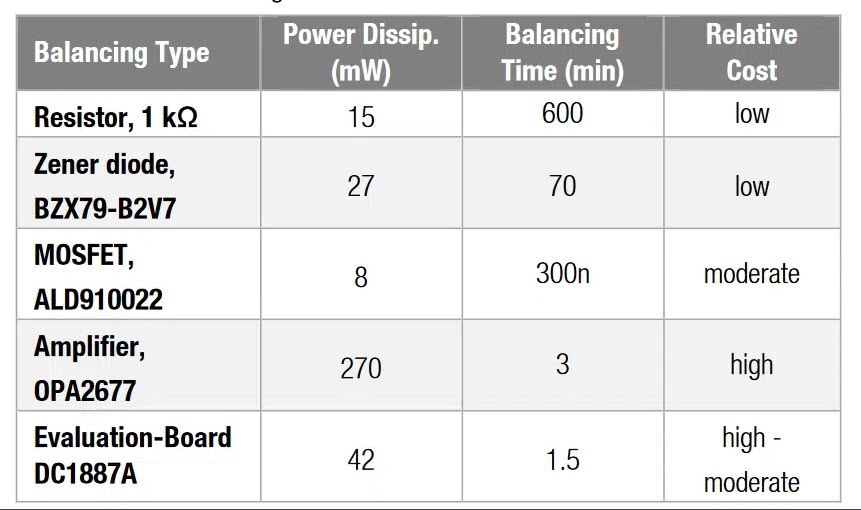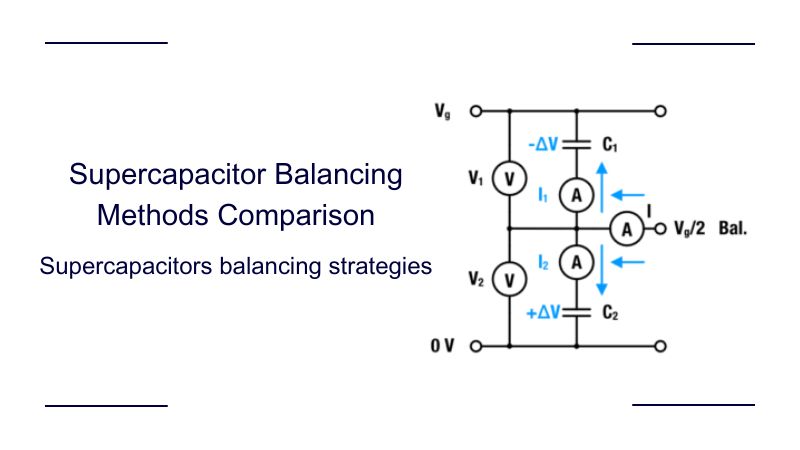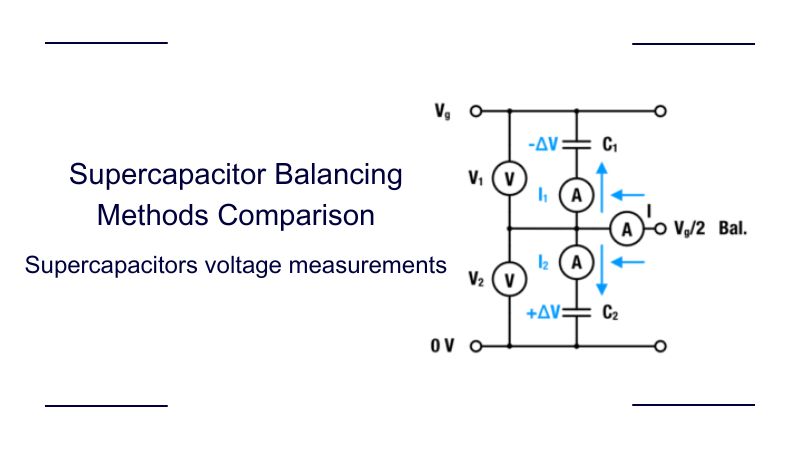We have reviewed the theoretical description of active and passive balancing strategies and performed some practical measurements to illustrate the different characteristics of each strategy. The article “Best supercapacitor balancing method?” examines various strategies for balancing supercapacitor cells connected in series, including passive methods like resistors and Zener diodes, as well as active techniques involving MOSFETs, operational amplifiers, and DC/DC converters. It evaluates each method based on balancing speed, power dissipation, cost, and suitability for long-term standalone applications, providing insights to help developers select the most effective supercapacitor balancing approach for their specific needs.
Best supercapacitor balancing method
In the following, we assess the tested balancing circuits based on balancing speed, power dissipation, and pricing. It is, however, the responsibility of the developer to find the best solution based on even more comprehensive parameters. Availability, lifetime, and design-in-time might also influence the choice of balancing strategy.
Balancing with the resistor is the slowest balancing strategy but yields the advantage of low power consumption, low cost, and easy circuit design. Depending on the resistors, it might be suitable for long-term standalone applications. The balancing speed of the Zener diode is moderate. It yields the advantage of relatively low power consumption, low cost, and easy circuit design. The relatively low power dissipation makes it suitable for long-term standalone applications.
The MOSFET circuit showed a relatively low power dissipation. The balancing speed of the given example is moderate. We found the MOSFETs might be suited for long-term standalone applications. Compared to the other strategies, the OP-AMP provides fast balancing but shows the largest power dissipation. Compared to the other strategies, it constitutes the most expensive solution. Due to the high power dissipation, it may not be suitable for standalone applications.
The balancing DC/DC board provided the fastest balancing and moderate power dissipation. It is generally an overall convenient but somewhat pricey solution. Concerning the included DC/DC conversion, its overall cost can be considered moderate. Due to its low power dissipation, it might be suitable for long-term standalone applications.
An overview of the summarized results is given in Table 2.

Table 2: Summary of the results




